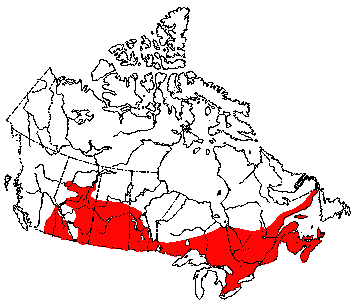
 |
 |
White-Tailed Deer
Odocoileus virginianus

White-Tailed Deer. Photo:Mont St-Hilaire Nature Center
The white-tailed deer is the most abundant species of large herbivores found in North America. It is a common inhabitant of the southern portions of New Brunswick, Nova Scotia, Quebec, Ontario, Saskatchewan, Manitoba, and Alberta. White-tailed deer play an important role in the Canadian economy; every year, millions of dollars are spent by hunters for their sport. White-tailed deer feed upon various hardwood trees. During the summer, they will feed upon the foliage and the buds of the trees, and during winter they may be restricted to the needles of conifers and whatever buds they can find. White-tailed deer are characteristic of young, regenerating forests. Mature, climax forests provide little food for the deer as the buds have grown out of reach. Throughout the warmer months, white-tailed deer are solitary, preferring to browse alone. But during the winter, many deer 'yard' in one location. A deer yard must provide ample cover (such as conifers), and enough food for the deer to survive. Once the deer have yarded, they will not leave even if they are sure to starve, or if they are being preyed upon. In Canada management is essential in order to maintain healthy deer populations year round. In the USA deer are so abundant that home owners are allowed to shoot them on sight. One study showed the American white-tailed deer population could double every year if not controlled, which is why hunting has become accepted as a method of population management.

![]() Distribution
of White-Tailed Deer in Canada
Distribution
of White-Tailed Deer in Canada
